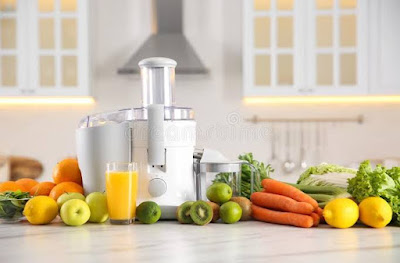Wheatgrass juicing has become a health trend, with enthusiasts praising its nutritional benefits and vibrant taste. However, choosing the right juicer for wheatgrass can be a perplexing task. In this article, we delve into the world of fast and slow juicers, exploring their pros and cons to help you make an informed decision.
1. Introduction
The Rise of Wheatgrass Juicing
Wheatgrass has gained popularity for its dense nutritional profile, containing vitamins, minerals, and antioxidants. As more people recognize its health benefits, the demand for wheatgrass juicing has surged.
Importance of Choosing the Right Juicer
Not all juicers are created equal, especially when it comes to wheatgrass. The choice between a fast and a slow juicer can significantly impact the quality of your juice and the preservation of essential nutrients.
2. Understanding Wheatgrass Juicing
Nutritional Powerhouse
Wheatgrass is a nutritional powerhouse, packed with vitamins A, C, and E, as well as iron, magnesium, and amino acids. Juicing wheatgrass provides a convenient way to access these nutrients.
Health Benefits
Consuming wheatgrass juice is associated with various health benefits, including improved digestion, increased energy levels, and enhanced immune function. Understanding these benefits adds another layer to the importance of selecting the right juicer.
3. Types of Juicers
Centrifugal Juicers
Fast and efficient, centrifugal juicers use high-speed spinning to extract juice. They are often praised for their quick operation.
Masticating Juicers
Masticating juicers, on the other hand, operate at a slower speed, gently squeezing the juice from the produce. This method is believed to better preserve nutrients.
4. The Need for Speed
Advantages of Fast Juicers
Fast juicers are celebrated for their time efficiency. Perfect for those with a busy lifestyle, they quickly produce a glass of juice without much wait time.
Limitations of Fast Juicers
However, the high speed of centrifugal juicers may generate heat, potentially affecting the nutrient content of the juice. It's crucial to weigh the speed advantages against potential drawbacks.
5. The Slow and Steady Approach
Benefits of Slow Juicers
Slow juicers, or masticating juicers, operate at a lower speed, minimizing heat production. This gentle process is believed to retain more nutrients in the final juice.
Drawbacks of Slow Juicers
Despite their nutrient-preserving qualities, slow juicers often come with a higher price tag and a slower juicing process. Understanding these trade-offs is essential for making an informed decision.
6. Nutrient Retention
Impact of Juicing Speed on Nutrient Preservation
The speed at which a juicer operates directly affects the preservation of nutrients. Slow juicers are often recommended for those seeking maximum nutritional benefits from their wheatgrass juice.
Ensuring Maximum Health Benefits
For individuals prioritizing nutrient retention, the choice between a fast and a slow juicer becomes a critical factor in their wheatgrass juicing journey.
7. Taste and Texture
How Juicing Speed Affects Taste
Juicing speed can influence the taste of the final product. Some argue that slow juicers produce a smoother and more flavorful juice, while others prefer the quick and straightforward approach of fast juicers.
Texture Considerations in Wheatgrass Juicing
The texture of the juice can also vary between fast and slow juicers. Understanding your preferences in terms of taste and texture is vital for a satisfying juicing experience.
8. Cleaning and Maintenance
Fast Juicers vs. Slow Juicers
The convenience of fast juicers extends beyond the juicing process. They are often easier to clean and maintain, making them an attractive option for those with a hectic schedule.
Making an Informed Decision
Considering the time and effort required for cleaning and maintenance is crucial when choosing a juicer, ensuring that it aligns with your lifestyle and preferences.
9. Price Points
Budget Considerations
Fast juicers are generally more budget-friendly, making them accessible to a broader audience. However, it's essential to weigh the initial investment against the long-term benefits.
Long-term Investment
Slow juicers, while pricier, are often seen as a long-term investment in health. Assessing your budget and commitment to wheatgrass juicing helps determine the most suitable option.
10. Real-Life Experiences
User Testimonials
Learning from the experiences of others who have incorporated wheatgrass juicing into their routine provides valuable insights. User testimonials can offer a realistic perspective on the advantages and challenges of different juicers.
Personal Stories of Juicer Selection
Understanding the thought process behind individuals' juicer choices can assist you in aligning their experiences with your own preferences and priorities.
11. Wheatgrass Juicing Tips
Preparing Wheatgrass
Proper preparation of wheatgrass is essential for a successful juicing experience. From harvesting to cleaning, knowing the best practices enhances the overall quality of your juice.
Maximizing Juice Yield
Tips on maximizing juice yield are invaluable, ensuring that you extract the most from your wheatgrass. These practical suggestions can make


Comments
Post a Comment